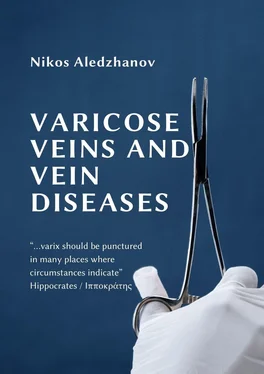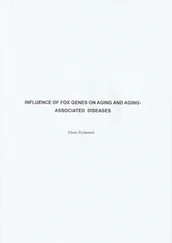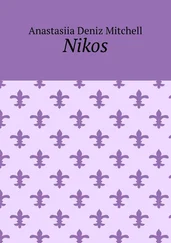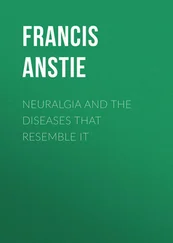VARICOSE VEINS AND VEIN DISEASES
Nikos Aledzhanov
Before taking any medication contact your doctor
© Nikos Aledzhanov, 2021
ISBN 978-5-0053-4518-9
Created with Ridero smart publishing system
The book is intended for a wide range of readers and is devoted to diseases of the venous system. Varicosity and other venous diseases are common pathologies of the lower extremities. Currently, there is no more pervasive vascular disease than varicose veins, which occurs nearly a quarter of the adult population of the world. And this is not surprising, because the legs take on the weight of the body and they are in motion every day. The main reason for the development of varicosity is heritable disease of the venous wall. And if the relatives had varicose veins, then one way or another it will most likely show itself. You can get rid of varicose veins quickly enough, especially if the disease is not started and precautionary measures are taken on time. The book presents modern views not only on varicose veins of the lower extremities, but also diseases such as thrombosis of superficial and deep veins, trophic ulcers, chronic venous insufficiency. Quite effective and modern methods for the treatment of cosmetic defects, such as spider veins and asterisks, have been proposed. Some chapters are devoted to compression garment and sport, as not all of its types are a contraindication to training with varicose veins and it can help to improve the general condition.
“… varix should be punctured in many places where circumstances indicate”
Hippocrates / Ιπποκράτης
The first pictire of varicose veins was found west of the Acropolis, dating back to the 4th century BC. A bearded man was depicted with a varicose vein on his left leg. In his work Comparative Biographies, Plutarch describes one of the first surgery for varicose veins. The Greeks were looking for new ways to treat and study the circulatory system. Diogenes of Apollonia and Euryphon of Cnidus in the 5th – 4th centuries were the first who described blood vessels and divided them into arteries and veins. Ideas that laid down in ancient Greece, such as miniflebectomy, vein ligation, compression therapy, are still used today. There are known cave paintings that indicate the use of a compression bandage in the earliest era of human development. Hippocrates believed that ulcers of the lower extremities are associated with varicose veins. In the treatment of ulcers, Hippocrates pointed the veins and bandaged the lower extremities. About the treatment of varicose veins, Hippocrates wrote: “… varix should be punctured in many places, where circumstances indicate.” The surgeons of the Hellenistic era were the first who dared to remove varicose veins. In earlier times, these operations were unknown. Byzantine doctors believed that the most common areas of varicose veins were the lower extremities, the abdomen (abdominal cavity “medusa’s head”), and the temporal lobe. The methods of vein surgery of the Byzantine doctors are based on the methods of the famous Greek doctors of the Hellenistic period, which moved into medieval surgery, influencing and inspiring even modern surgeons. For example, the modern “vein engaging technique” described in 1975 dates back to the Byzantine period. For its part, after a while, Friedrich Trendelenburg (1844—1924), conducting operations, refers to the operation described by the doctors of Byzantium and other ancient surgeons. The revolutionary method of surgical treatment of varicose veins was proposed in 1908 by the American physician W.W. Babcock, which consisted of the removal of the subcuticular veins. The next stage in the development of phlebology is associated with the emergence of X-ray diagnostic methods in the 1920s. The appearance of color-imaging ultrasound angioscanning and Doppler imaging was a breakthrough in the diagnosis and treatment of varicose veins. Sclerotherapy – the injection of chemicals (special foam) into the varicose vein appeared in the 1970s. The method of laser coagulation of varicose vessels, whichwas proposed by K. Bone in 1998—1999,remains one of the main methods in modern phlebology. This method became an important point in the treatment of varicosity.
“Part of the disease comes only from the way of life”
Hippocrates / Ιπποκράτης
Chronic venous disease (CVD) of the lower extremitiesis a very common pathology, affecting up to 50% of the adult population; among CVD, varicose veins of the lower extremities is the most common.
Incidence of venous disease
According to various sources, up to 88% of women and up to 66% of men from among the inhabitants of developed countries have signs of venous diseases. Among the adult population, the prevalence ranges from 24% to 50%. According to the WHO, every third adult on the planet suffers from varicosity. Studies over the past few years indicate that different degrees of the venous system damage of the lower extremities occur and reduce the quality of life in 80% of people of working age. One of the largest studies that describe cases of chronic venous diseases was the Vein Consult Program, which included 91,545 people from 20 countries. Diseases of the veins were found in 83%. Among patients with CVD, women (68.4%) prevailed over men (31.6%). The average age of those who surveyed with CVD was 53.3 years. Age dependence of the prevalence of venous diseases. The prevalence of varicosity in people aged 18 to 24 years is from 11%, men in the age group from 30 to 40 years is about 3%, and men over 70 years old is 40%. For women: from 30 to 40 years old is about 20%, and for women over 70 years old, more than 50%. From 55 to 64 years old is about 55.7%. The prevalence of skin changes in chronic venous unsufficiency (CVI) for women from 30 to 39 years old is 1.8%, while at the age of over 70 they are already found in 20.7% of those who surveyed. The increase in the prevalence of CVD with age is also confirmed by a study conducted in 2010 in Germany, in which molecular genetic methods were used for the first time.
Geography of chronic venous diseases
There is a well-defined dependence on the level of development of the country and diseases of the veins, therefore WHO classifies these diseases as diseases of civilization, in other words, to pathologies associated with urbanization and scientific and technological development.
Russia: the detection rate between men and women is 2 to 1, 38—40% for women and 18—20% for men;
USA: varicose veins among men in the age group 30—40 years old – 22%, 50 years old – 42% of cases, among women – in the age group 30—40 years old – 45%, 50 years old – 64% of cases.
England: about 11 – 18%
Europe: women and men – 2: 1;
In the countries of Central Europe, the prevalence of varicose veins in women is 30%, in men – 15%;
Mediterranean countries 18—19%;
China, Japan, India, the incidence rates in these countries are low, about 9%;
Africa 5—6%;
Arab countries approximately 11.5%;
New Zealand – about 33—40%.
In developing countries, varicose veins of the lower extremities are much less common than in economically developed countries, however, such indices may indicate a low quality of diagnosis, in contrast to countries where diagnostic rates are much higher, as well as the number of visits to a doctor with these kind of problems.
What is the circulatory system?
The circulatory system performs one of the most important functions in the body – it delivers to organs and tissues oxygen and nutrients what are necessary for the body’s vital activity, while simultaneously removing carbon dioxide and waste products from them. The blood vessels through which blood moves from the heart are called arteries, and the vessels through which blood returns to the heart are called veins. Small vessels that permeate all organs are capillaries.
Читать дальше










![John Bruce - The Lettsomian Lectures on Diseases and Disorders of the Heart and Arteries in Middle and Advanced Life [1900-1901]](/books/749387/john-bruce-the-lettsomian-lectures-on-diseases-and-disorders-of-the-heart-and-arteries-in-middle-and-advanced-life-1900-1901-thumb.webp)

